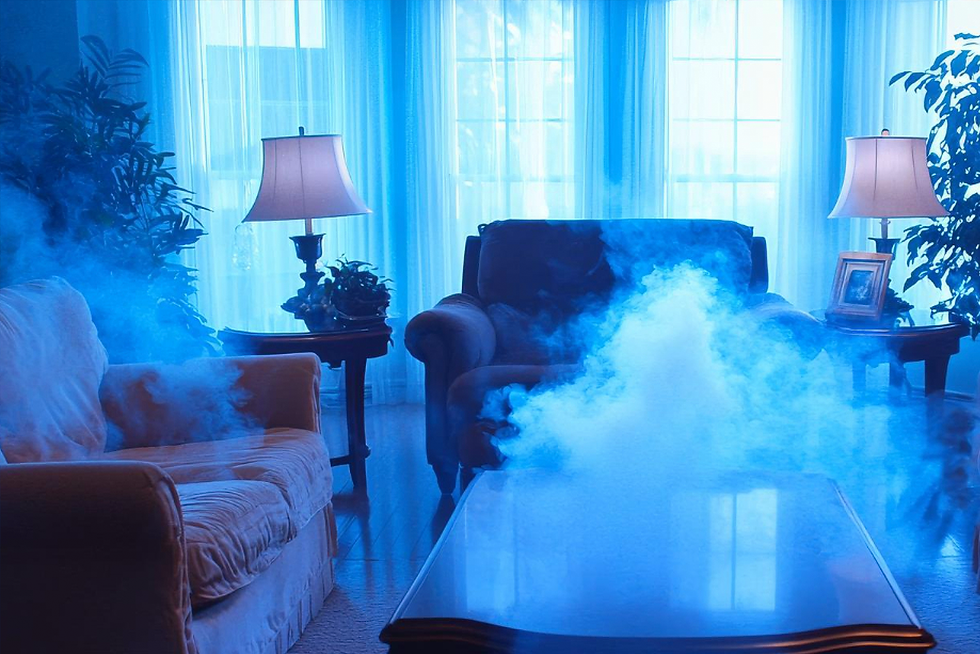IAQ and Humidity
- Corey Provencal

- Apr 5, 2013
- 2 min read

Florida Indoor Air Quality Humidity & IAQ
Maintaining relative humidity below 50% inhibits mold and mildew growth, dust mite infestations, and bacteria. This lower relative humidity also reduces the out-gassing of volatile organic compounds (VOC’s). Molds are incapable of obtaining the moisture needed for their development directly from the atmosphere, but they can obtain it from a substrate, which has absorbed moisture from moist air (60% to 100% relative humidity).
The relative humidity of the air has an indirect effect on fungal growth, and the more hygroscopic a material is, the more susceptible it is to mold growth. The minimum moisture content at which mold growth occurs depends on the material and usually ranges from 10% to 14%. Suitable substrates include carpet fibers, gypsum, concrete, bricks, etc. Mold spores are everywhere all the time, entering from outdoor air as well as on pets and clothing. A mold spore landing on an indoor surface is likely to be insignificant and amount to little more than a common component of indoor dust, until such a mold spore lands on a moist organic surface (such as drywall.) High indoor humidity causes the surface moisture level to be sufficient for mold sporulation. Since a mold spore requires moisture to propagate and grow, the indoor humidity level is a key gating factor in the control of indoor mold (and dust mites) in buildings. Certain common mold genera and species, such as some members of the Aspergillus sp. and others grow readily on common building materials if they also have enough moisture. While there are fungal species that are able to grow under a remarkably wide range of environmental conditions, keeping indoor humidity at the appropriate level will reduce the chances of growth of the most common indoor problem molds. High indoor humidity can encourage more issues than indoor mold. The same moisture conditions that support growth of problematic indoor molds also encourage the development of bacterial hazards, dust mite populations, mite fecal allergen problem, and possibly other insect problems in buildings. The same measures of humidity control to prevent mold growth are needed to discourage the dust mite population that exists in all living areas. Measures discussed in this article including choosing and maintaining the proper humidity level to avoid indoor mold will also work to minimize the level of dust mites and dust mite allergens. Keep the indoor humidity level in the mid-comfort range. A maximum indoor relative humidity of 50% RH may be acceptable, 45% RH better. At 60% indoor RH, we’re entering the indoor mold-formation risk zone of high interior moisture in building wall or ceiling cavities or on wall and floor surfaces, possibly conducive to mold growth.
John Lapotaire
Florida Indoor Air Quality Solutions
#microshield #IESO #FloridaDBPR #Chapter468 #HB5007 #indoorairquality #SenateBill2234 #mold #IICRC #IEQ32 #LEED #freemoldinspection #DepartmentofBusinessandProfessionalRegulation #moldpretreatment #MoldRelatedServicesLicensingProgram #SB1244 #PCBBCAS1101 #HB4171 #moldtesting #moldprevention #IndoorEnvironmentalStandardOrganization #healthyhome #ResidentialMoldAssessment #HB5005 #FloridaStatutes #moldinspection #moldremoval #moldremediation #ASTM #johnlapotaire #USGB #newhomemold #PartXVI #JohnPLapotaire #HouseBill713 #ciec #airquality









Comments